Recent Why SERVPRO Posts
When Mold Problems Lead to Legal Action
8/17/2022 (Permalink)
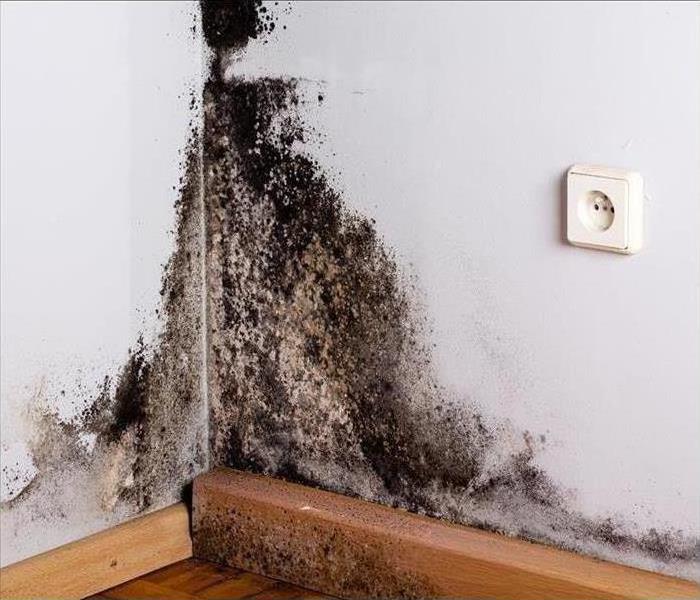 Mold damage in a home in Wallingford, WA.
Mold damage in a home in Wallingford, WA.
Any property that has the potential for excess moisture has the potential for black mold growth. For landlords in Wallingford, WA, maintaining the trust of their tenants involves taking care of issues that can lead to mold problems in a timely manner or, if such a problem already exists, having it mitigated as soon as they're made aware of it. Failing to do so can lead to legal action.
Landlord's Responsibilities
Rental law in most states requires property owners to provide reasonably livable spaces for their tenants. Examples of the service renters can expect are often written directly into the lease agreement:
- Routine maintenance
- Prompt repairs to faulty plumbing, HVAC system, and security devices
- Restoration of structural issues
The implied warranty of habitability is violated when the air quality in the apartment or condo is diminished because of unresolved black mold problems. If reasonable standards are not met, the tenants may have no choice but to sue for damages.
Tenants' Rights
Ideally, if tenants report a mold issue to their apartment manager, the manager will call mold remediation specialists immediately to assess the mold damage and take care of it. Furthermore, landlords are legally obligated to reimburse tenants for any damage or loss they experience as a result of the fungus problem. If they fail to respond or deny that a problem exists, however, tenants may sue for damages. These lawsuits typically end up in small claims court unless the cost of repairing damage caused by the mold exceeds the state's limits on such cases. In that case, tenants should seek the advice of personal injury lawyers to proceed with legal action.
Black mold is not a problem that just goes away on its own. Getting rid of it requires cooperation between landlords and tenants. If the problem is reported before it gets out of hand and mitigated as soon as it's reported, there may be no need for legal action at all.
The Cost of Mold Damage
7/3/2022 (Permalink)
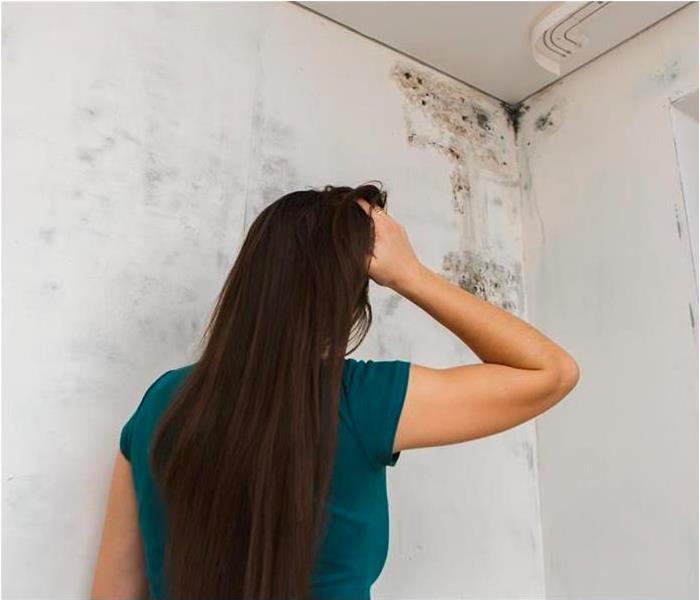 Mold damage in a Seattle, WA home
Mold damage in a Seattle, WA home
You may think that a bit of mold damage to your Seattle, WA, home is not a big deal. Yet the problem will not go away on its own. If you allow the mold growth to continue, you may have to call in professional mold removal specialists. The more extensive the damage, the more the mold cleanup will cost.
Mold Inspection
If you suspect a mold problem in your home, you should first bring in an inspector to confirm if your suspicions are correct. This can cost between $200 and $600. A qualified mold inspector should have:
- An undergraduate degree in science or engineering
- Proof of mold investigation coursework
- Industry certification
Mold Remediation
Once an inspector has confirmed the presence of mold in your home, the cleanup can begin. The process typically starts with mold removal. Experts will also clean and disinfect any personal items, walls or carpets affected by the mold.
The cost of this service can vary. If you only have mold in your crawlspaces, you will likely have to pay between $500 and $4,000. However, if your home has major structural damage, the repairs could cost $10,000 or more.
The expense doesn’t end there. If the infestation is severe, you may need to temporarily move out of your home during the black mold removal. You would then have to spend more money on hotel costs.
Insurance Coverage
While insurance may pay for this black mold cleanup, the coverage only applies in certain circumstances. If the mold growth resulted from a burst pipe or a similar emergency, you will likely be covered. However, if you failed to properly address a water leak or flood in your home, and this excess moisture led to the mold, you may be responsible for the cost of mold removal.
Finding and cleaning mold from your home is an expensive process. Insurance may not cover the costs, either. You should thus do what you can to limit the buildup of mold in your house.
3 Ways To Control a Mold Problem in Your Home
1/12/2022 (Permalink)
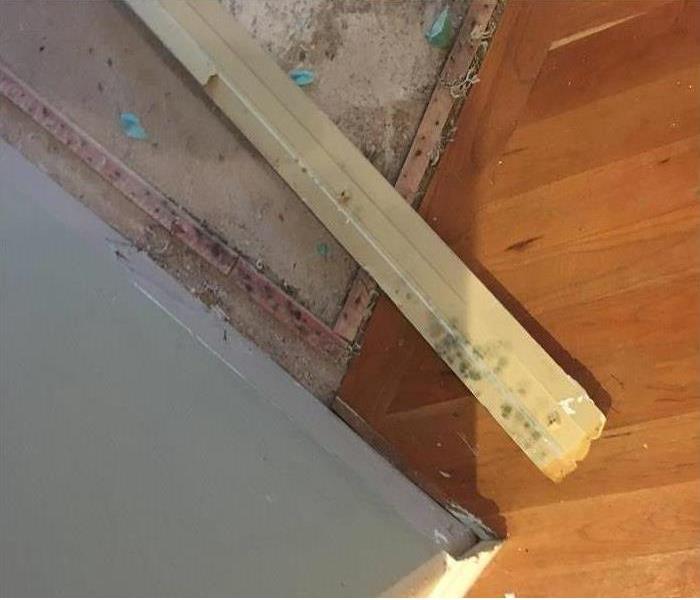 If you think your property might suffer from mold damage, let our SERVPRO team make it "Like it never even happened."
If you think your property might suffer from mold damage, let our SERVPRO team make it "Like it never even happened."
3 Ways To Get Rid Of Mold In Your House
Water damage in your home in Wallingford, WA can be problematic enough on its own. Unfortunately, areas saturated with water are likely to experience mold growth. However, there are various ways you can keep mold under control in your home.
1. Find and Eliminate the Source(s) of Water
As soon as you realize that water is leaking or flooding your home, locating the source(s) of the water can help you know what to do next. If you find that an appliance is leaking, shutting down or turning off that appliance may stop the water from flowing. However, in some instances, you may need to shut off the water in your home. By stopping the flow of water, you will keep the damage contained and lessen the areas where mold is likely to grow.
2. Keep Your Home Dry
Once water is no longer flowing into your home, it’s wise to make sure your home is as dry as possible. Using fans and opening windows can help your home dry out more quickly. Since mold grows in warm, damp environments, keeping your home dry will prevent mold from growing. Additionally, quickly taking measurements to keep your home dry can also help to prevent further water damage from occurring.
3. Take Preventative Measurements
Sometimes, you may not notice that mold has grown in your home until it has spread and caused damage. However, it can be helpful to frequently check the areas in your home where mold is most likely to grow. If you do notice any leaks in your home, it’s generally best to fix the problem as quickly as possible in order to prevent mold from growing.
With knowledge of how to manage the issue of mold growth in your home, you can also take steps toward mold prevention. If water damage in your home has caused extensive amounts of mold to grow, however, you may want to contact mold remediation experts.
Removing Dryer Lint From the Exhaust Area
11/19/2021 (Permalink)
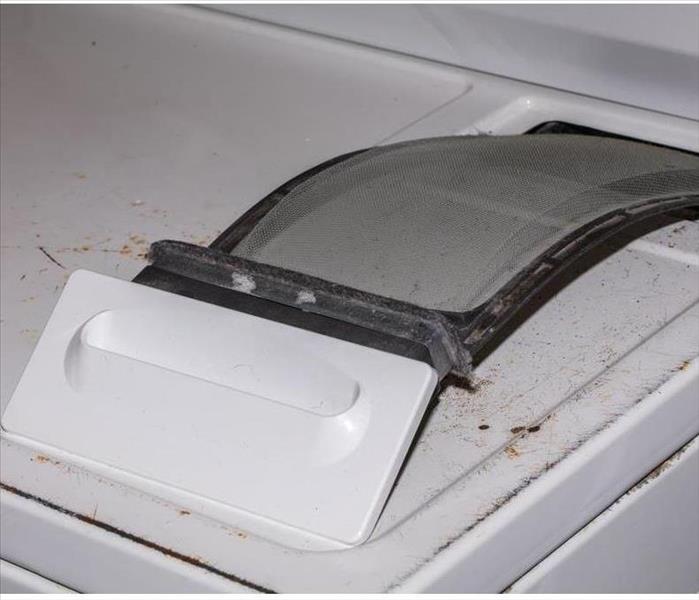 To avoid an accident that leads to fire damage, you generally need to keep your dryer as lint-free as possible
To avoid an accident that leads to fire damage, you generally need to keep your dryer as lint-free as possible
Cleaning the Exhaust Area Of A Dryer
If you recently noticed a lot of lint buildup in the dryer at your Greenlake ,WA, home, the risk of a lint fire might have crossed your mind. It can be especially hazardous for lint to build up in the dryer’s exhaust area. Here are five steps to take if you want to rid your appliance’s exhaust section from lint and avoid a dryer fire.
1. Clean the Lint Filter
Before you do anything else, make sure to clean off the dryer’s lint filter. You will also want to do this every time you are about to run the machine. You can usually remove this lint with your hand, but you can also run the filter under water.
2. Unplug Your Dryer
Before you do any further work to prevent a lint fire, make sure the dryer equipment is unplugged. Forgetting to do so could cause a dangerous accident.
3. Access Exhaust Area
Take off the panel at the back of the dryer and remove the hose at the machine’s exhaust area. You can then reach the inside of your dryer and the exhaust section to clean out lint.
4. Clean Dryer Interior
Your next task is to clean the interior of the machine and the exhaust area. A cloth and a vacuum are the best tools to use.
5. Repeat Steps Yearly
To avoid an accident that leads to fire damage, you generally need to keep your dryer as lint-free as possible. Repeat the four steps above every six months.
Lint fire prevention can seem very challenging, but the five steps above should really help you to be prepared. As long as you remember to keep checking for lint and getting rid of it when you do find it, you will be in a better position to keep your Greenlake ,WA, home free of dryer fires.
Mold Growth: An FAQ
10/26/2021 (Permalink)
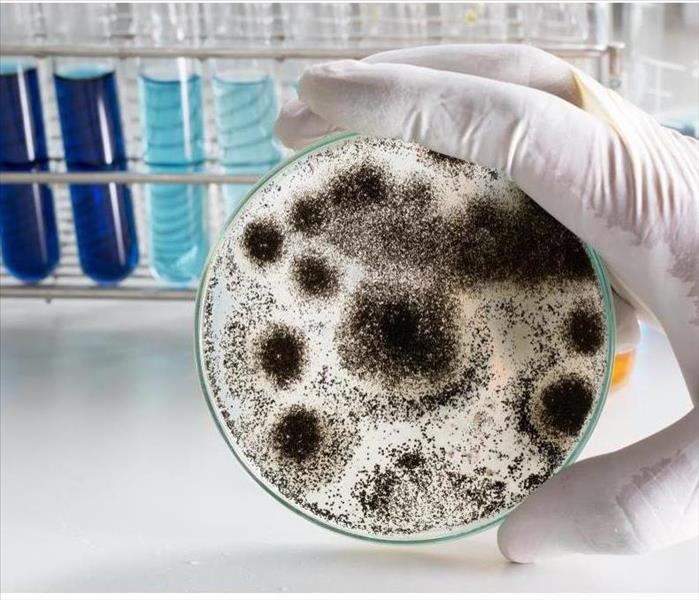 Mold remediation is a complex process that begins with eliminating the source of the mold. SERVPRO can help you with any mold damage In your home.
Mold remediation is a complex process that begins with eliminating the source of the mold. SERVPRO can help you with any mold damage In your home.
Mold Growth: Frequently Asked Questions
Mold may be disgusting and a danger to your home, but do you truly understand what mold is? Let’s take a look at a few frequently asked questions about mold, and what you can do to prevent its outbreak in your Wallingford, WA home.
What Is Mold?
Mold is a fungus that can take root in your home and proliferate, causing unsightly stains and aggravating allergies. Once mold sinks in deep it can be hard to get rid of.
What Causes Mold to Grow?
Mold growth is primarily caused by excess moisture in your home environment. You can frequently find it in places of your home that have suffered water damage. Factors that contribute to mold growth include:
- High humidity environments
- Water damage from flooding or leaking
- Broken and damaged pipes
- Condensation from malfunctioning appliances
Is Mold Different from Mildew?
While both mold and mildew are fungal growths, they’re not the same thing. You can generally tell them apart by texture; where mildew tends to be soft and powdery and will flake off to the touch, mold tends to be a fuzzier growth with a thicker texture.
How Can I Get Rid of Mold?
Mold remediation is a complex process that begins with eliminating the source of the mold. This means identifying where your water damage is coming from and repairing your leaking roof or broken appliance, or using a dehumidifier to remove moisture from the air. Cleanup can require disposing of mold-infested items and scrubbing others with baking soda and vinegar or harsher chemical solutions.
Once the Mold Is Gone, Will It Come Back?
It can. Mold is never wholly gone; it just goes dormant as invisible spores in your environment. If mold finds a combination of organic matter and moisture to feed on, then it can take root again and begin to grow. It’s best to remain vigilant and continuously seek to eradicate mold sources from your environment.
Keep Bathrooms Mold Free
10/4/2021 (Permalink)
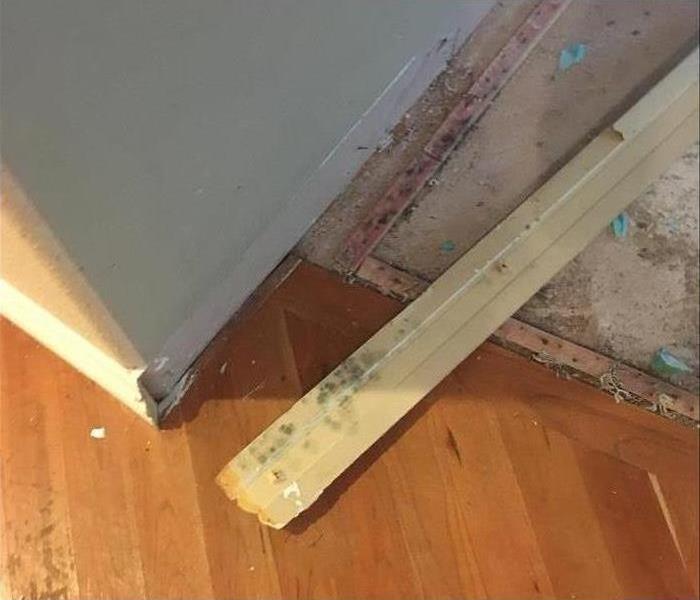 Mold damage in a Broadview, WA home
Mold damage in a Broadview, WA home
A nice warm shower or bath can be a great way to end the day or re-energize in the morning. You aren’t alone in being drawn to the comforts a bathroom can provide. Lingering dampness after bathing and potential water damage create welcoming environments for mold growth.
Finding the Mold
While sometimes obvious, mold damage can also be sneaky. Hidden water damage may likely be the culprit if you notice the distinct musty odor without the visual cues. When finding the source, check the following areas:
- Inspect toilets, sinks and pipes for signs of a leak or mold.
- Check caulking around tubs and showers.
- Remove ventilation fan cover to look for signs of growth.
- Inspect walls, grout, wallpaper, drywall, rugs and other porous materials for dampness.
Preventing Growth
The pesky fungus may be annoying, but luckily mold prevention is easy. Incorporating a few daily habits and regularly checking for damage can keep it at bay. Some tips include:
- After bathing, squeegee walls to eliminate lingering water.
- Always use the ventilation fan when bathing and keep it running for 30 minutes afterward.
- Mold loves humidity. Try to keep levels below 50% in the home via a dehumidifier or air conditioner.
- Keep bathrooms clean. Washing the rugs and towels and cleaning toilets, sinks and showers can eliminate conditions that mold and mildew love.
Mold Remediation
If a leak happens and results in water damage, getting rid of the mold simply requires a little labor or calling on a professional to take care of the issue. This will involve removing any caulking, drywall or other materials with signs of mold. A thorough cleaning and 48-hour dry time will be needed to eradicate and prevent growth.
Protecting your home in Broadview, WA from mold doesn’t have to be a cumbersome task. Making a few changes and occasionally inspecting the bathroom can keep it fungus-free.
Proactive Cleaning Around the Clock
7/11/2021 (Permalink)
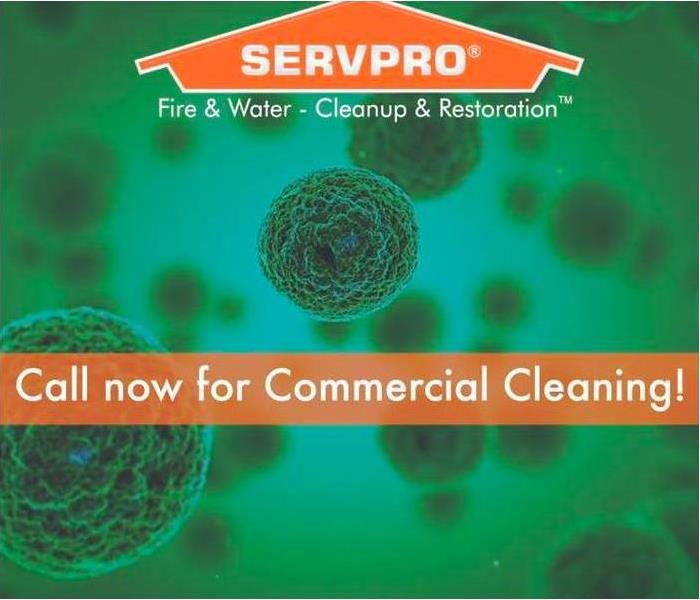 SERVPRO of Seattle Northwest is working around the clock to provide proactive cleaning.
SERVPRO of Seattle Northwest is working around the clock to provide proactive cleaning.
SERVPRO is Here to Help during this time of need
During this unprecedented time caused by the global pandemic of coronavirus, this is a reminder to our customers that we are specialists in cleaning services, and we adhere to the highest cleaning and sanitation standards.
Specialized Training
We are prepared to clean and disinfect your home or business, according to protocols set forth by the Centers for Disease Control and Prevention. We have years of experience in dealing with biological contaminants, and we will go beyond the scope of work that regular janitorial staff perform on a daily basis.
The CDC encourages cleaning of high-touch surfaces such as counters, tabletops, doorknobs, light switches, bathroom fixtures, toilets, phones, keyboards, tablets and tables. Other spaces mentioned in the CDC’s guidance for commercial spaces include:
- Kitchen/Food Areas
- Bathrooms
- Schools/Classrooms
- Offices
- Retail Spaces
- Water Fountains
- Shelving/Racks
- Sales Counters
- Carpets and Rugs
- Stair Handrails
- Elevator Cars
- Playground Equipment
- Fitness Equipment
Specialized Products
The CDC recommends usage of a labeled hospital-grade disinfectant with claims against similar pathogens to the coronavirus. Multiple products in the SERVPRO product line carry the EPA-approved emerging pathogens claims. While there is currently no product tested against this particular strain of the coronavirus, we are following all guidelines as provided by the CDC and local authorities.
Call Today for a Proactive Cleaning
If your home or business needs deep cleaning services, call the experts today – SERVPRO of Seattle Northwest is your trusted leader in cleanup and restoration.
4 Ways to Keep Your Garden Free of Mildew
6/14/2021 (Permalink)
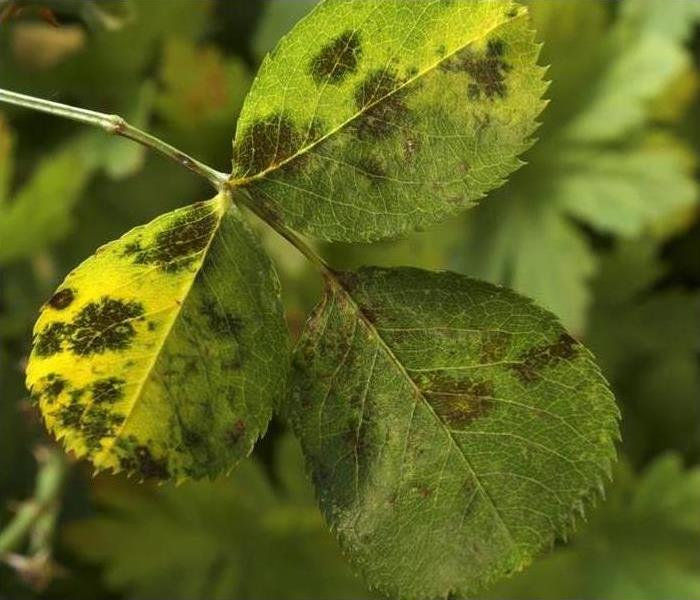 Prune your plants to remove mildew growth.
Prune your plants to remove mildew growth.
Techniques To Remove Mold Growth
Keeping a garden in Seattle, WA can be an enjoyable pastime, but sometimes problems can arise. If you notice a white, powdery substance forming on your plants, then you likely have a mildew problem. Plant mildew is a type of mold that only grows on plants. This can be harmful to them, so you should use the following techniques to remove the growth.
1. Wash Your Plants
In some cases, simply cleaning your plants with water can be enough to remove the mildew growth. Some plants are delicate, so be sure to take proper care when doing this. Using a spray bottle with plain water can remove most mildew.
2. Keep Leaves Dry
Although washing your plants with water is a good way to remove mildew that has already grown, keeping your plants dry can help prevent the mildew growth from returning. Plants absorb water in their roots, so there is often no need to water the leaves. If you notice mildew growing, water closer to the ground to avoid exposing foliage to excessive moisture.
3. Give Your Plants Space
While it may look nice to have many plants growing in a small area, this is not always best for the health of your plants. Leaving a larger space between plants will improve air circulation in the area to help keep moisture levels lower. It is also possible for plant mildew to spread between plants that are closer together.
4. Prune Infected Areas
In severe cases, you may need to prune your plants to remove mildew growth. Pruning the areas with high levels of mildew will not only remove the infection, but it will also allow more air to circulate around the plant and keep it dry. Mold and plant mildew need moisture to grow, so reducing excessive moisture is the best way to prevent this fungus from forming. If you have a problem with mold in your home, a clean up and restoration service can help remove it.
How Do You Get a Mold Assessment for Your Home?
6/1/2021 (Permalink)
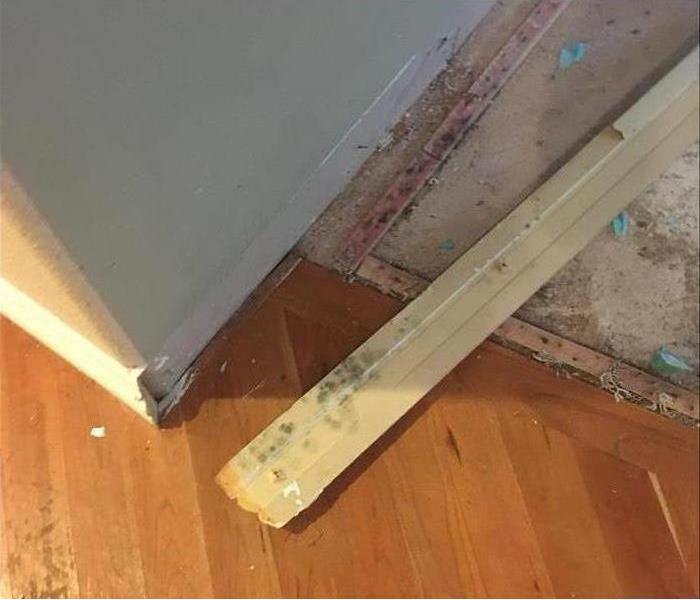 Mold found behind baseboard.
Mold found behind baseboard.
Before a home can have its mold problem addressed, it needs to have a high-quality mold assessment done. There are two basic ways to do this: either run a DIY test or have a professional inspection. In all cases, experts recommend having a professional do it.
What Is Black Mold?
In its natural environment, mold is kept in careful check by the sun. It can only grow in areas almost continuously in shade and subject to dampness. It also must compete with other fungi for the nutrients needed for its growth when it grows outside.
All mold needs lots of moisture to grow. Inside a home, this normally comes from sources such as
- Plumbing leaks
- Sewer leaks
- Roof leaks
Mold can really find a safe harbor indoors. It loves to grow on cellulose, such as that found in wallboard and wood. Plus, mold spores are everywhere, with hundreds found in a typical cubic meter of air. This is normally harmless and of no concern. However, it becomes a problem when exposed to frequent excess moisture.
What Is a Mold Assessment?
When a mold remediation expert in Haller Beach, WA, performs an inspection, it doesn’t just include a test. They bring commercial equipment, such as a hygrometer and infrared camera, to search for hidden water leaks.
Black mold is a serious problem, but even worse is the water damage being caused by the leak. If it goes on long, it can easily cause thousands of dollars in damage – and it might not be covered by insurance if you’re found negligent. Indoor mold growth is always a key sign of dampness getting where it shouldn’t, so never ignore it.
However, it differs from mildew. Mold only grows on porous surfaces with nutrients available as food. Mildew grows on grout and tile and usually can be easily cleaned up by the homeowner with a solution of bleach and water.
A good mold assessment can find hidden water leaks before they cause severe damage. A simple DIY test isn’t enough information to make a proper appraisal, though.
Simple cleaning tips for tackling mold and mildew in your Seattle NW home
4/7/2021 (Permalink)
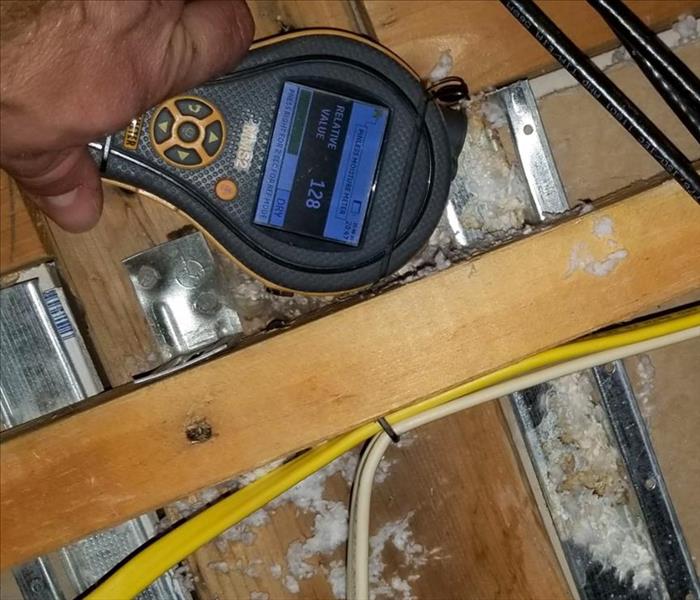 Mold can begin growing in as little as 48 hours after a water loss.
Mold can begin growing in as little as 48 hours after a water loss.
Dealing with nasty mold and mildew are common cleaning issues that can arise within your home or business. Unfortunately, our Seattle climate can give mold and mildew the perfect conditions to grow and thrive in, and can be found anywhere from damp clothing to upholstered furniture and carpets.
When you find mold and mildew on your furniture and carpets, and need professional help to get rid of it properly, our expert service professionals at SERVPRO of Seattle Northwest will use our state of the art equipment to help you take care of your mold issue quickly and safely.
However, if your mold and mildew problems are less catastrophic here are a few simple tips to help you remove mold and mildew from…
...white-cotton clothing
Apply a solution of one part bleach to three parts water to the stain and allow the solution to sit for 5-10 minutes, then wash as directed.
...non-bleachable clothing
If the article of clothing cannot be bleached, try removing the mold with lemon juice or white vinegar. Soak a cotton pad in lemon juice or vinegar and place it on the stain. Allow the solution to soak for several minutes. Then, remove the cotton pad, and sprinkle the area with some salt to further boost the effect of the acid. If possible, place the item in a sunny spot to dry. The sun rays will also bleach stains. Repeat as needed, then wash the garment as usual.
If the mildew stain persists, bring the article to a professional dry cleaner.
...grout and walls
To clean mildew and mold effectively from walls and grout, mix a solution of one part bleach to three parts water. Dampen (don’t soak) a sponge with the solution and apply it to the moldy areas. As the mildew disappears, dry the area using an old towel.
...upholstery
If your upholstered furniture has water damage and a substantial amount of mold growth, it should be replaced.
However, if there's only a small mold stain, you can try using a 3% hydrogen peroxide solution. Blot it on the mold and allow it to work for a minute or so. Rinse solution from the area by alternately dabbing it with a damp cloth or sponge and a dry cotton cloth. This probably will not remove the mold, but it may help lessen the stain.
Consult a professional if the stain persists or reappears.
...carpet
Be very careful dealing with mold on your carpet, its best to get the opinion of a certified mold expert, and let them safely remove any substantial amount of mold from your home or business.
If you need assistance for water or mold clean up & restoration, give SERVPRO of Seattle Northwest a call at (206) 789-2300
We're available 24/7 for emergency services.
The Best Techniques for Preventing Mold Spread in Your Building
5/7/2020 (Permalink)
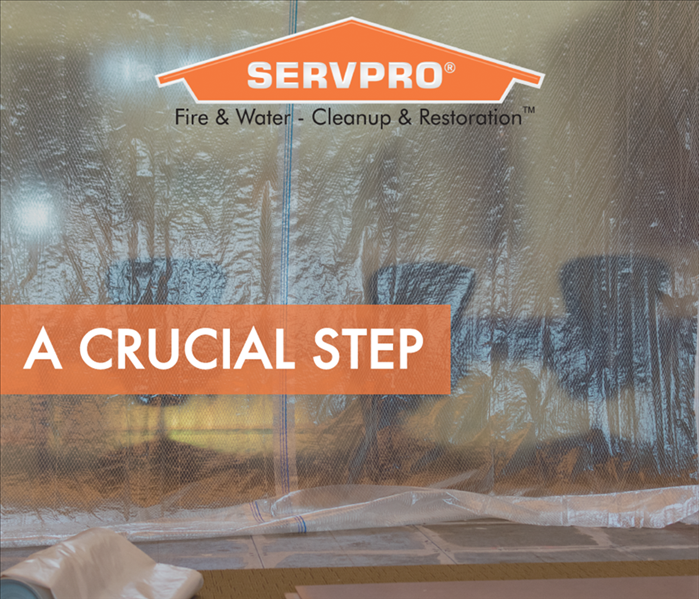 Containment is the isolation of the work areas to prevent cross contamination of clean, unaffected areas of the building structure
Containment is the isolation of the work areas to prevent cross contamination of clean, unaffected areas of the building structure
The last thing you want to do when you discover a problem such as back mold is to make it worse. A good principle with mold is to keep it contained in one area as this will make mold removal faster and easier. To do this, it helps to understand a little bit about how mold spreads throughout a building. All types of mold are made up of microscopic scores that float on the tiniest of breezes. They also like warm, damp locations, such as moist attics and basements, bathrooms, and sometimes laundry areas. There are hundreds of different types of mold, and though they might require slightly different cleaning approaches, most types spread in a similar manner.
The Importance of Air Ducts
One avenue of spreading for black mold is your HVAC system. Once the mold spores are in the furnace ducts, they can easily spread throughout the building. Every time the heating or cooling is turned on, more spores are carried to all corners of the building. The drifting spores will likely only take hold in those areas that have high humidity. One of the first actions a qualified mold remediation company will take is to turn off the furnace. The following measures should be taken to facilitate mold containment:
- Physical barriers
- Negative air pressure chambers
- Air filtration
- HEPA vacuums
Steps to clean ducts will also be taken by technicians. Once the mold is contained, the process can move onto mold removal and restoration.
The Value of Professional Testing
Testing for mold can tell you the extent of your mold problem, as well as if you have black mold or a different strain of fungus. It could be necessary to test after the restoration process is complete, to determine if mold is still present or if it has returned. Store-bought mold kits sometimes show confusing positives, since most buildings are likely to have some mold present. A certified mold tester is better able to decipher the results of a test.
The Role Insurance Agents Play in Your Cleanup Efforts
1/22/2020 (Permalink)
 Contact both of these professionals immediately after you learn of a disaster in your office
Contact both of these professionals immediately after you learn of a disaster in your office
You run a business, so you understand that takes many key components to efficiently operate an organization or system. If you experience a catastrophe at work, the right pieces need to be in place so you can rebuild and avoid long-term interruptions to your daily operations. Filing an insurance claim is one of the most critical steps. It works hand in hand with hiring the right professionals in Ballard, WA, to restore your building.
In the Immediate Aftermath
If you discover any damage in the office from fire, smoke, water or mold, you can't wait a moment to start the remediation process. Getting professionals involved in the cleanup effort will help ensure a smoother and more efficient process. Follow these steps after a disaster:
- Get everyone safely out of the building and away from harm.
- Contact the proper authorities to stop the source of the damage.
- Contact a certified disaster response team to evaluate the incident and make a restoration plan.
- Contact your agent to file an insurance claim.
How the Insurance Company Works With the Cleanup Company
Before initiating the cleanup and rebuild procedures, you need to file a damage claim with your provider. The insurance agent will want to know how the disaster occurred, how severe the damage is and what intervention is needed to restore your office. These steps are critical in helping the agent know what the insurance will pay for and in processing the claim quickly. The agent will use a claims inventory system to track the claim and make sure everything is organized. The agent will use this from the time you report the incident until the crew from SERVPRO completes the cleanup and restoration.
It will give you peace of mind knowing your needs are in good hands when you pair a reliable emergency cleanup company with your insurance provider. Contact both of these professionals immediately after you learn of a disaster in your office.
What Happens to Your Building in a Partial Loss After a Fire
12/29/2019 (Permalink)
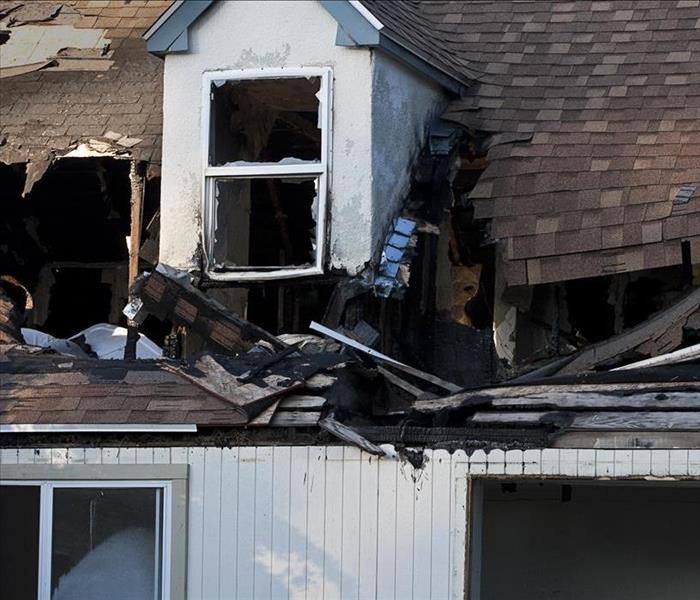 Partial fire loss on a roof in a building
Partial fire loss on a roof in a building
Structure fires come in all sizes. They can inflict damages in wide ranges as well. Even if a fire doesn't appear to cause visible problems, there could be hidden issues in your Greenlake ,WA, building. While a total loss insurance claim would mean the complete destruction of your office, a partial loss is also common. A fire loss can be difficult to detect on your own. It's important to let a professional inspect the entire area for problems.
Where Issues Can Hide
Some types of smoke damage are easy to spot. Soot and ash can cover floors, furniture, electronics and documents. However, when there is partial loss in the building, the problems will show up in some of the following areas:
- Air ducts in the heating and air conditioning system
- Roof integrity
- Inside walls
- Window frames
Inspecting the Roof
A certified professional will check for smoke, fire and water damage on the roof. Shingles or outside layers may appear fine, but the wood underneath can be wet due to water the firefighters put down to extinguish the fire. This can lead to mold growth. Excess heat from the fire may even make the roof weak and may be at risk of collapsing.
Air System
The need for fire restoration may not be evident in some areas of your building. Professional smoke and fire cleanup teams will inspect the ventilation system in the facility for soot buildup. Left undetected, this could compromise the air quality in the office.
Looking at the Siding
Regardless of the type of your building's exterior, a partial loss can affect this area as well. Aluminum siding can melt under extreme heat, and stucco can crack. The building's foundation is prone to damage too.
A fire loss can affect many parts of your workplace. Even if you don't easily spot problematic areas, you should call a professional to look for damage.
Certification Standards for a Remediation Company
11/27/2019 (Permalink)
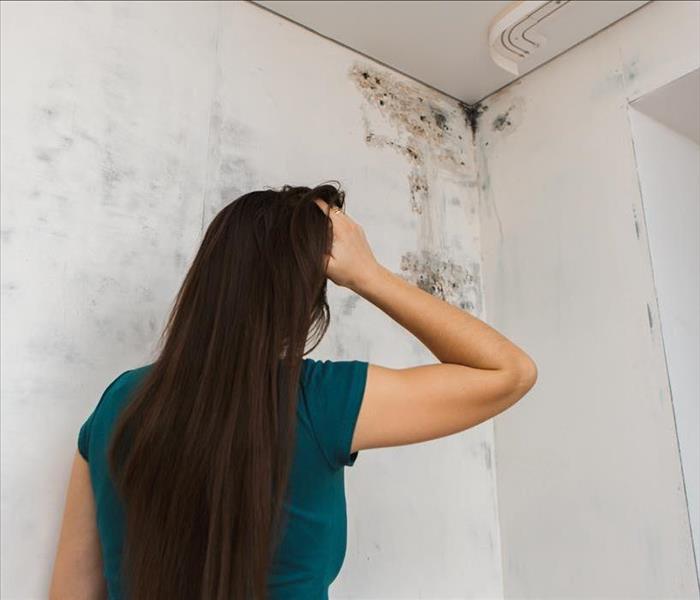 Mold found in a Broadview, WA
Mold found in a Broadview, WA
When you encounter mold in your home in Broadview, WA, it's a cause for concern. You want to take care of the problem but know that not all companies will do an equally effective job. This is where standards can be helpful for your search. Look for a certified mold company that has the experience and the knowledge to clean your home safely and completely. The Institute of Inspection Cleaning and Restoration Certification is among the most prominent professional groups that develop standards for mold cleanup. The group works to establish the right protocols for the inspection and evaluation of properties suspected of containing mold. These standards have been developed through a rigorous process involving a large group of stakeholders.
Why Mold Certification Matters
Mold is a complex organism and should be handled by a worker with mold certification. It consists of microscopic spores that grow well in a humid environment. A certified mold cleaning company will follow a process that includes the following critical steps:
- Inspection and assessment
- Containment of mold
- Treatment of the source of moisture
- A process of cleaning and sanitizing
- Treatment of affected structures and contents
- Restoration
A certified mold remediation company will have the training and equipment necessary to clean your home. Look for a remediation team that follows IICRC standards.
Why Mold Should Be Cleaned From a Home
Mold contains irritants and allergens that can compromise the health of your family and your pets. It can also cause a musty odor to be present in the home. The visual affects of mold are also unpleasant and can affect the property value of a home. The mere presence of mold growing in a home also indicates there is excess moisture and high humidity present, so it is smart to identify the source of this moisture. A certified mold technician can locate the presence of moisture and safely clean your home. A professional can also clean the contents in your home that have been tainted by mold.
Basics to Include in a Fire Escape Plan
10/13/2019 (Permalink)
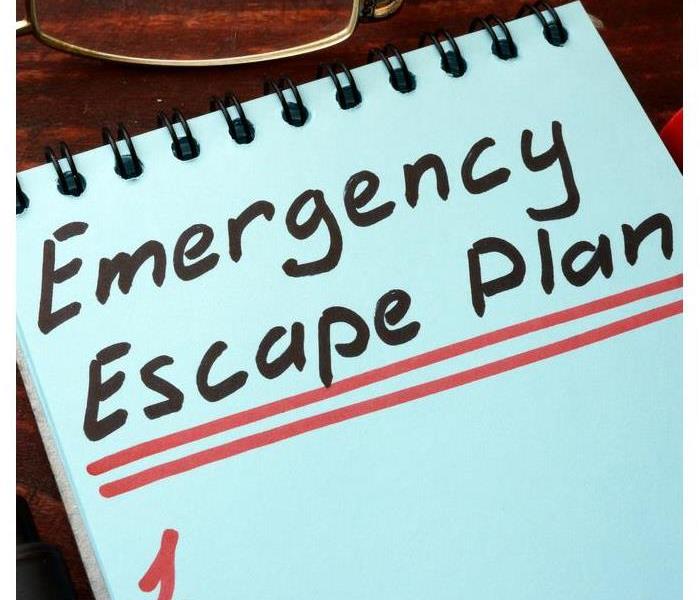 A fire escape plan ensures that everyone understands what to do and where to go
A fire escape plan ensures that everyone understands what to do and where to go
While smoke detectors are imperative for alerting you and your family in Greenlake ,WA, of a home fire, what happens next is key to safely getting out of the home. A fire escape plan ensures that everyone understands what to do and where to go. After developing a plan, it is important to practice it and discuss it regularly.
Steps for Developing a Plan
Fires spread quickly. If one happens, you need peace of mind that every person in the home knows exactly what to do. As a family, making a fire preparation plan should involve the following:
Inspect home for potential escape routes and exits. Consider creating a floor plan with those exits, as well as discussing the best ones depending on the location a person is located during the fire. The best route should be the safest and fastest.
Once routes have been established, keep them clear and ensure openings to the outdoors work properly.
Have an open discussion on what to do during the fire. Everyone should stay low while heading to their escape route and close doors behind then to maintain the fire.
While belongings are important, they aren’t as important as life. Ensure everyone understands that getting out safely is the one and only priority.
Determine a meeting place outside the home that is far enough from the fire but clearly visible.
Maintain and memorize a list of emergency contacts.
Once safely out, stay way from the fire. Let emergency responders do what they need to.
Maintaining the Plan
Having a plan is important, but it will only work if people know it. It is recommended to test the plan twice a year. Practicing is also a good way to ensure that everyone clearly hears what the alarm will sound like. If someone is not able to hear at as well, assign a person to be in charge of waking them in case of a real emergency. Additionally, when you have guests, especially ones staying overnight, be sure to share the fire escape plan with them.
While we all hope a fire doesn’t happen, having a fire escape can help ensure everyone’s safety. Instead of worrying about belongings, get everyone out safely and leave the fire damage to the professionals.
What To Know About Furnace Maintenance
7/10/2019 (Permalink)
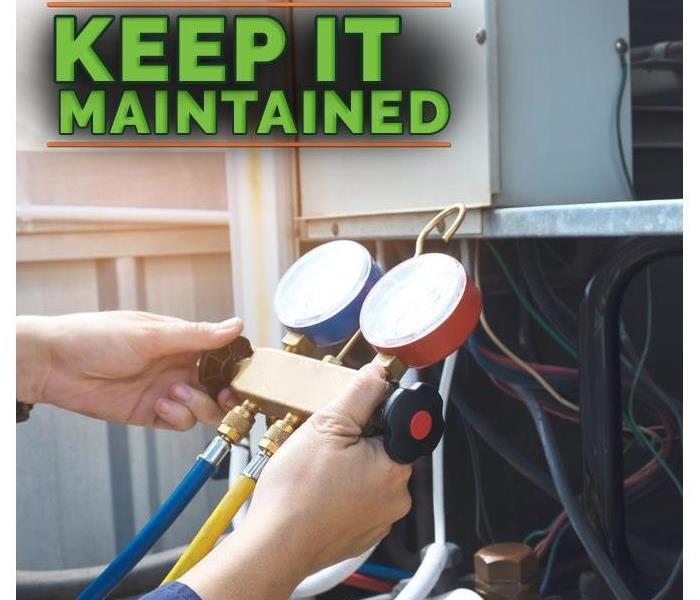 Properly maintaining your furnace may help to prevent a costly accident or a fire cleaning down the road.
Properly maintaining your furnace may help to prevent a costly accident or a fire cleaning down the road.
Properly maintaining your furnace in your Seattle home may be able to help you prevent a costly accident, and the need for fire cleaning afterward. Fortunately, there are some easy maintenance steps that can be taken with most furnaces.
Steps You Can Take
If your furnace seems to be malfunctioning there are several things that could be wrong. Some of the most basic causes are things you can check for yourself.
• A fuse may be blown, or a circuit tripped causing the unit to lose power
• The thermostat may have been turned off
• The power switch may have been turned off
• On gas units, the pilot light may be out
When to Call a Professional
Calling a professional can not only help ensure that the furnace is serviced by someone familiar with it’s unit type, but may help you prevent the necessity of a fire cleaning down the road. If you are unsure what the problem is, or find a fuse blown on several occasions, it is best to call a professional for repair. If you smell gas then quickly exit your home and call your gas company or fire department. Do not try to turn on any lights or turn the gas off yourself.
If You Do Experience Problems
Unfortunately, sometimes fire or smoke damage can occur from a furnace. In events like these a fire damage and restoration professional may be able to help with any smoke cleaning and repairs your home may need. At that time, you may want to have your furnace repaired or replaced by a professional as well.
You can follow some basic steps to keep an eye on your furnace's maintenance needs. While some may be things you can do yourself, others should be done by a professional familiar with the furnace type. If the furnace does malfunction then a restoration and fire cleaning professional may be able to help with your home’s needs.





 24/7 Emergency Service
24/7 Emergency Service















